Posted: 26/11/2020
There are few car manufacturers that inspire such devotion and passion as Mazda. As it celebrates its centenary, we meet some of the owners, collectors, employees, and fans from around the world to find out what makes Mazda so special.
Interviews Helene Dancer

“NOT MANY CAR BRANDS LAST AS LONG AS 100 YEARS. MAZDA JUST KEEPS GETTING BETTER AND BETTER.”
Odiel Mennink, Dutch journalist and a Women’s World Car of the Year judge.
“Mazda has a special meaning for me. I got my racing license in a Mazda MX-5 Miata in 2014, and I drive a jet-black fourth-generation MX-5. I call it my Batmobile. I love how it feels to drive a roadster—it’s so light and agile. The MX-5 is also rear-wheel drive, which is important for a car buff like me. It’s an affordable sports car and unique in its class. For me, Mazda means quality, design, functionality, and progressiveness.
There are no crazy frills—you know what you get with Mazda. And Mazda takes you into account as a driver. You feel like the car is made for you. My brother restores cars and looks after my MX-5 for me. He’s very happy when he looks inside the car, because it’s clearly made by engineers for engineers. I’ve been a judge for the Women’s World Car of the Year award for four years now. This year, the Mazda3 was the winner.
I think the car is really well balanced. It combines simple lines with a bold appearance, and the powertrains and safety features are good too. And it’s just a joy to drive. You get a lot of car for the price. Not many car brands last as long as 100 years, and Mazda just keeps getting better and better.”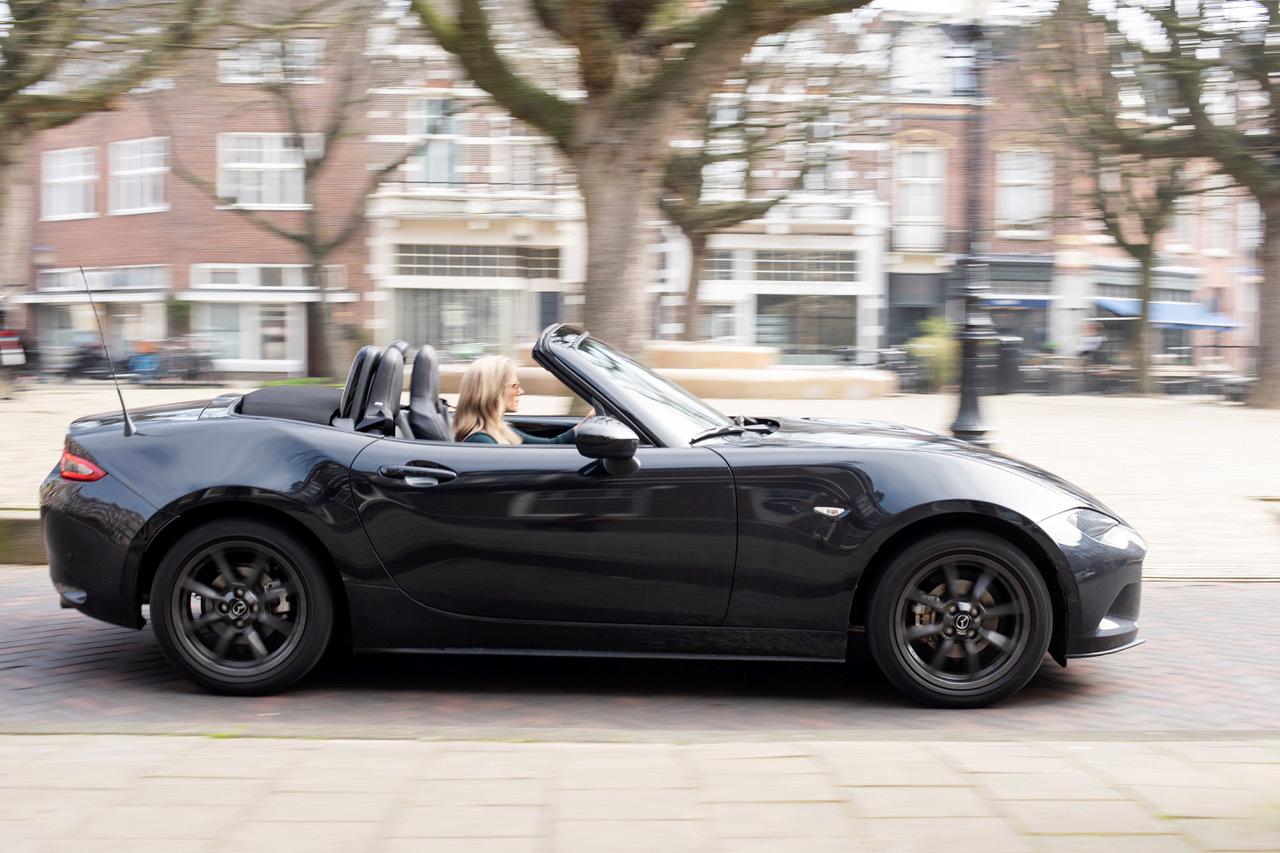
Odiel’s line of work has brought her into contact with many Mazdas over the years, and resulted in the purchase of a fourth-generation black MX-5 she calls her “Batmobile.”
Photography: Stephan van Leiden
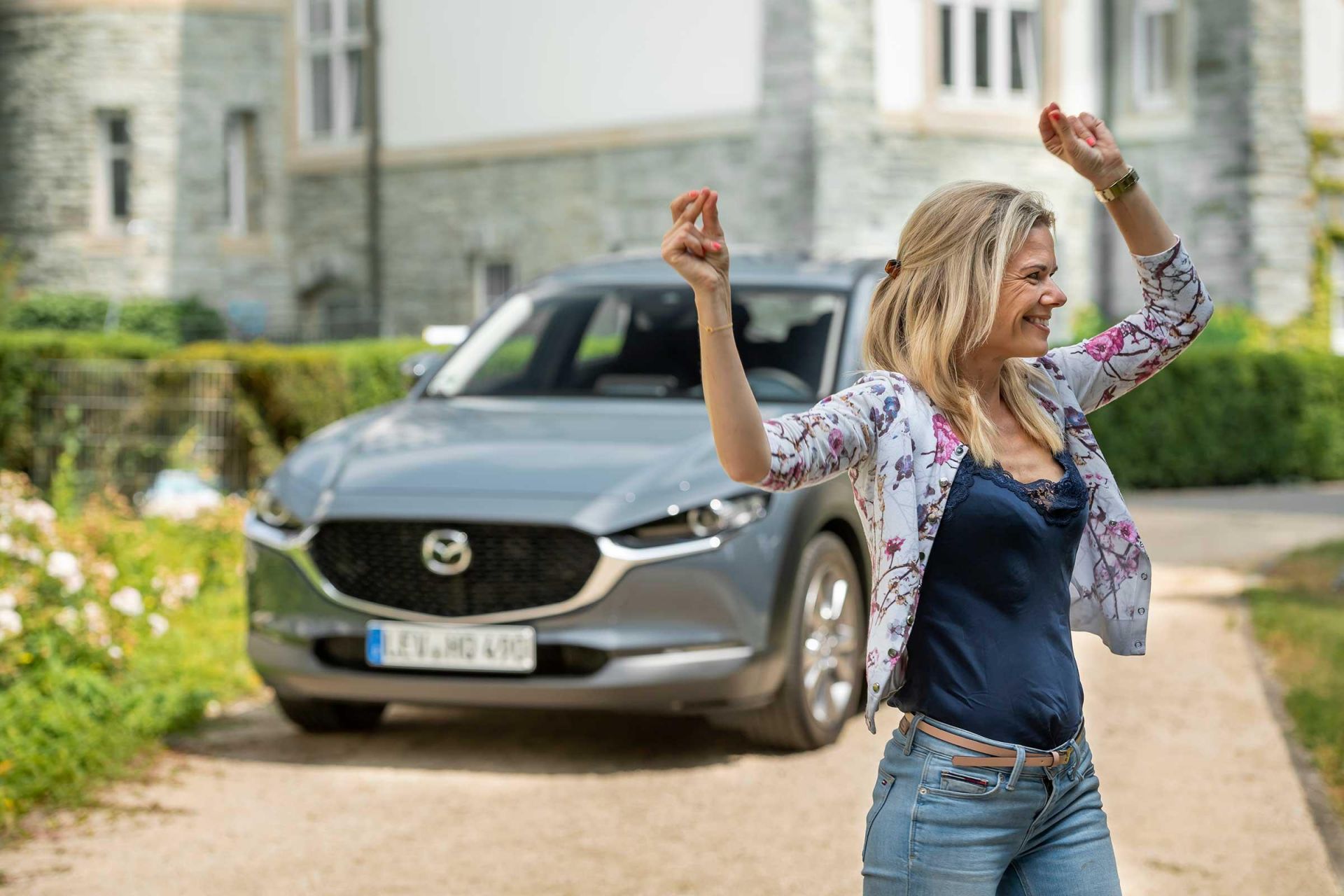
“MY LOVE FOR MAZDA STARTED WITH THE ROTARY ENGINE, BUT NOW IT’S DEFINITELY ABOUT THE COMPANY’S APPROACH TO DESIGN.”
Danny Irvine, automotive enthusiast from Australia, who owns 29 Mazdas including the R360.
“Mazda’s R360 was its first passenger car: a kei car, the smallest road-legal Japanese car. It was released in 1960 and production ran until 1966. The one I have in my collection is a 1966 model, and I’ve had it for nine years. The R360 was revolutionary at the time because Mazda took a different approach to its competitors. Most of the cars of that era and size utilized a two-stroke engine, but Mazda built a four-stroke engine, which made it a lot quieter.
Mazda also focused on using lightweight materials in the manufacturing—much like SkyActiv technology today—because horsepower was quite limited. The engine was 356cc, so the only way to improve the car’s performance was to make it lighter. The engine was made from aluminum, when a lot of the competitors used cast iron, and the rear window was plastic instead of real glass.
The R360 was an incredibly successful car—it became a class leader. Mazda also offered an automatic version, the first time a manufacturer had done so in a kei car. I have 29 Mazdas in my collection: five are kei cars and the rest are predominantly rotary-powered models. My love for Mazda started with the rotary engine, but now it’s definitely about the company’s approach to design. I love the consistency—you can see a common DNA in all its cars.”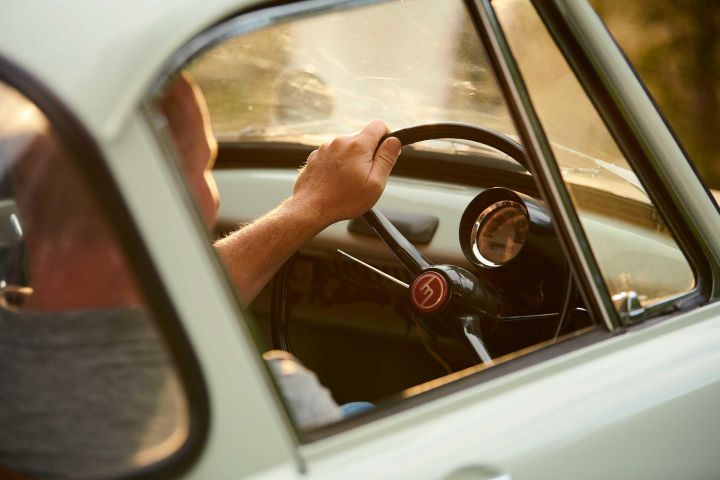
The R360 was Mazda’s first four-seat passenger vehicle, and celebrates its 60th anniversary in 2020.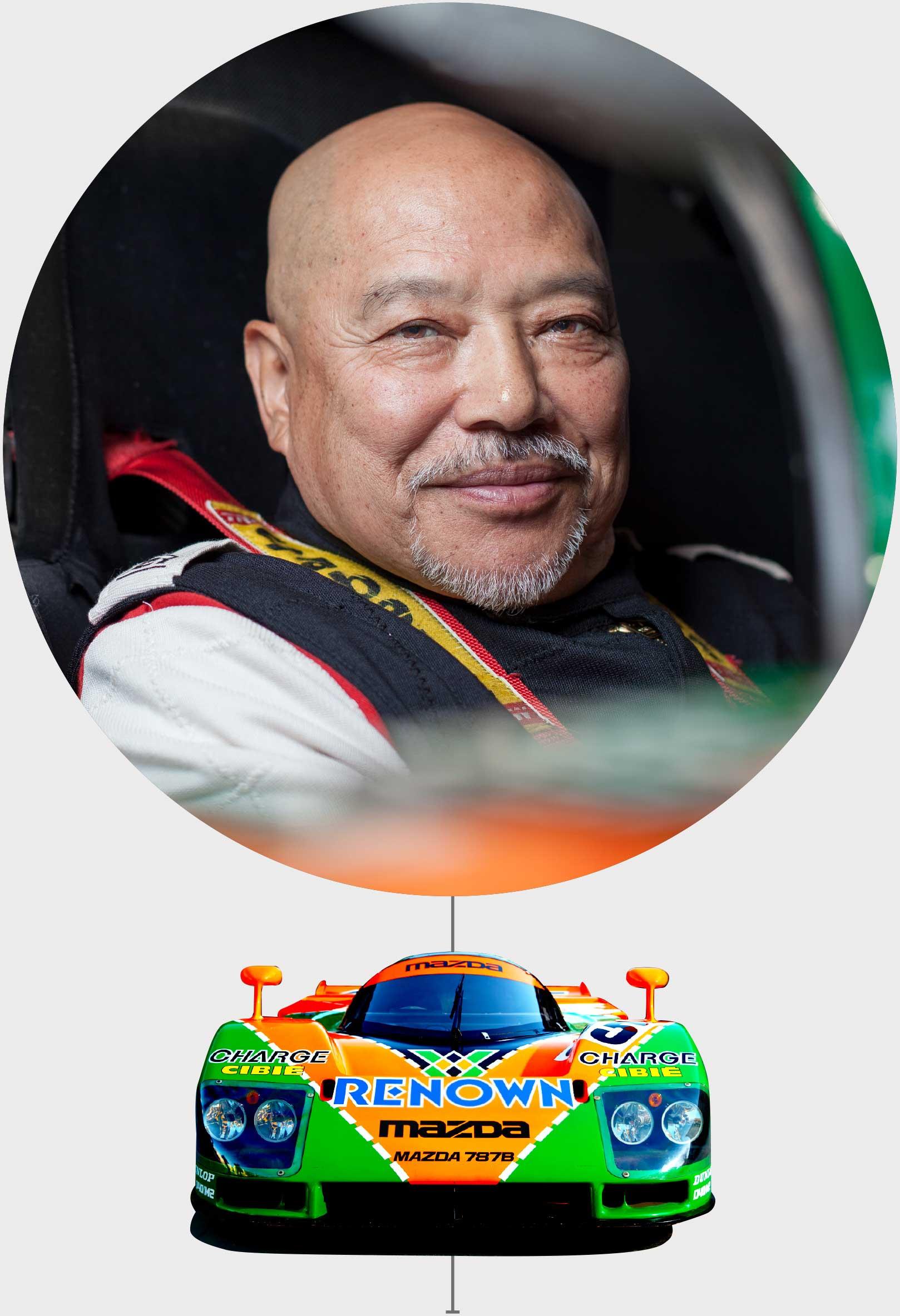
Photography: Joe Wigdahl
“WE MADE SURE OUR LE MANS RACING CARS WERE DESIGNED FOR THE DRIVERS.”
Yojiro Terada, legendary Japanese Le Mans Racer and Development Driver.
“I learned to drive when I was 16 in a local driving school’s three-wheeler Mazda truck. And the very first car I owned was the Mazda R360—a two-door, four-seater kei car. I loved it so much that I drove it every day. It was so much fun! However, my biggest moment with Mazda was when it won the 24 Hours of Le Mans in 1991.
I finished eighth in that race, but worked on the development of the 787B (above). I entered the competition for the first time in 1974, and raced back to back from 1981 to 2008, often for Mazda, which led to me being nicknamed ‘Mr. Le Mans’ in Japan.
In the early 1990s, all the racing teams, including Mazda, started adopting new technologies. It was obvious that the cutting-edge computer tech would bring all kinds of benefits. But, at the same time, we reminded ourselves to keep the cars human-centric, regardless of how advanced they could be. At the end of the day, it’s the drivers who would be racing them on the circuit.”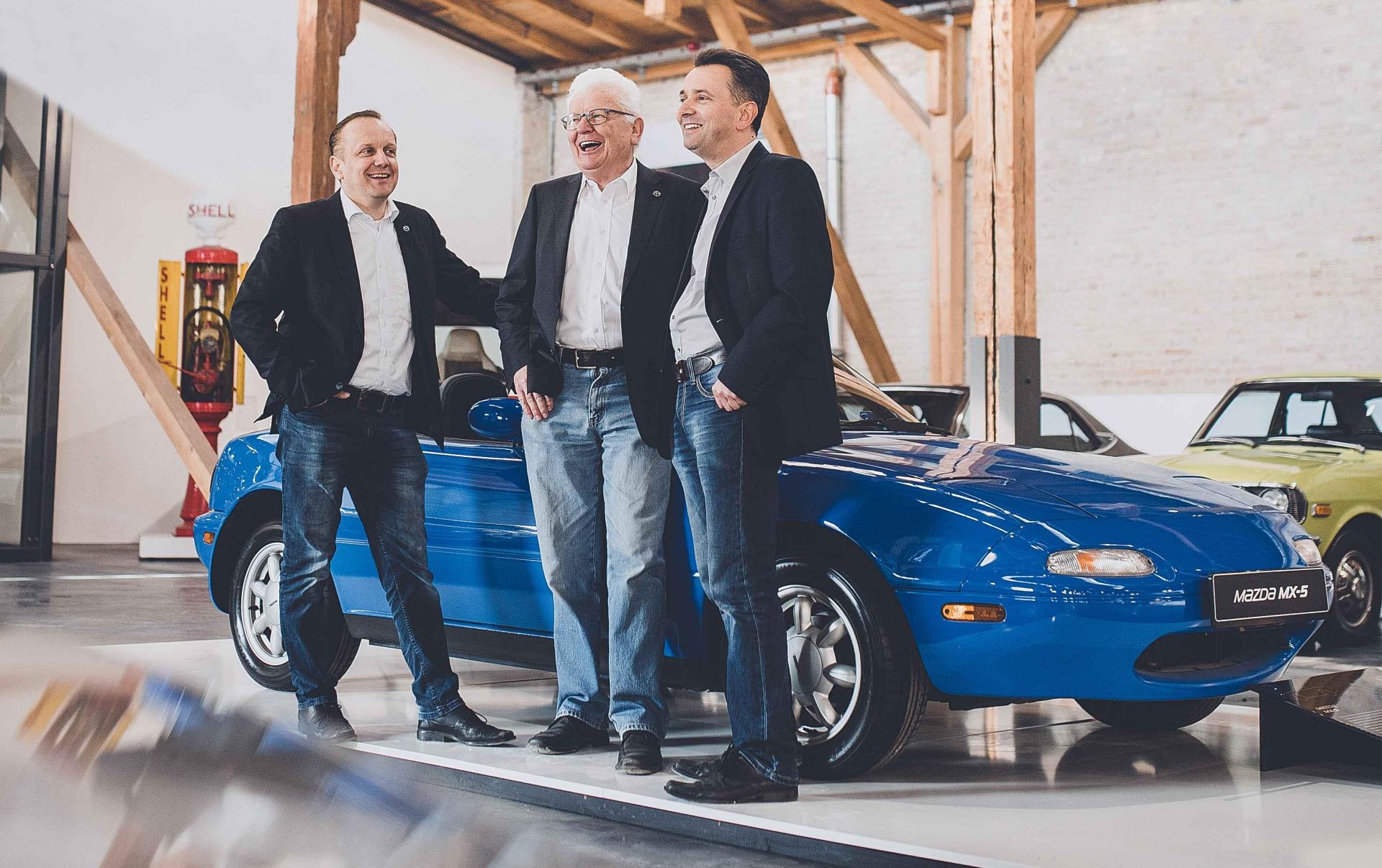
“OUR TYPE-GB WAS SO SPECIAL, WE RESTORED IT TOGETHER.”
Markus Frey and his father Walter and brother Joachim (left, center, and right respectively) own Frey’s Mazda Classic Car Museum in Augsburg, Germany.
“The Mazda-Go was the first car Mazda ever made. It came out in 1931 and, at the time, it was special to have a car powered by gasoline. People also used it to help repair Hiroshima after World War II. It spawned other three-wheelers and we have a 1950 Type-GB in our museum, which is more compact and stronger than the earlier ones.
It’s the oldest Mazda in the museum and we start our sightseeing tours with it. We got the car about eight years ago. It was so special that my brother, my father, and I completely restored it together. We also did a color test with the Mazda-Go in the Mazda museum in Hiroshima, because we wanted ours to be the same blue. My father started his Mazda dealership over 40 years ago, and now has three in Augsburg.
He said he liked Mazda because it was different from the other car companies. My brother and I grew up with Mazda, and have followed in our father’s footsteps. Our dream was to make a museum and, after collecting cars for over 30 years, we now have them all in one place. People come from all over the world to see our collection. We have nearly every Mazda ever built, apart from some prototypes that are impossible to get.”
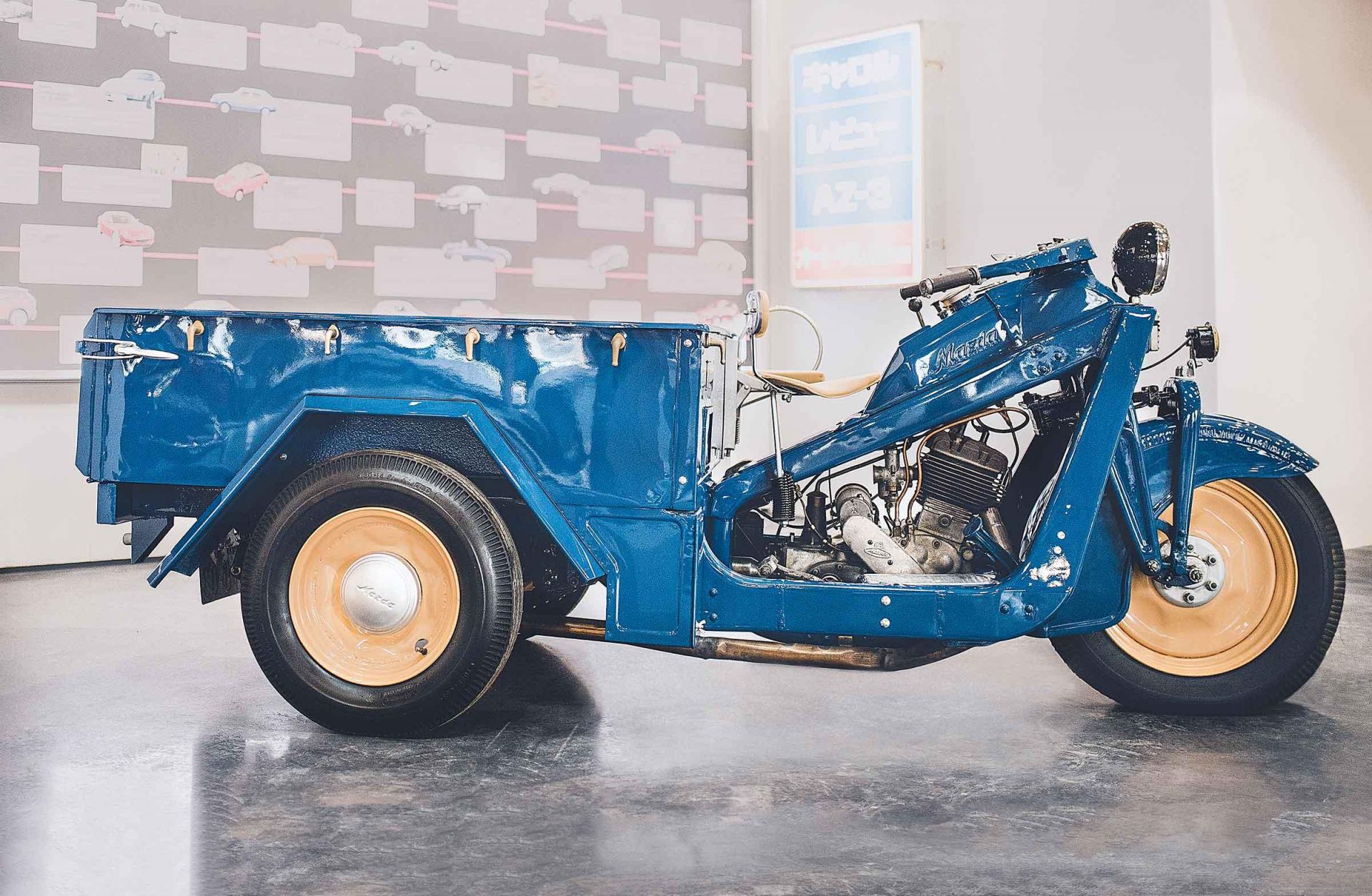
The Freys’ is the only museum to be officially recognized by Mazda outside Japan.
“I’D LOVE FOR OUR SON TO GROW UP WITH THIS CAR AND TO SHARE THIS HISTORY WITH HIM.”
Luis and Sarah Chaidez, from California, help organize the U.S. rotary engine festival SevenStock and are RX-7 fans.
“I’ve had a number of Mazda RX-7s throughout my life but now I own two: a 1986 RX-7, which is the first one I ever purchased, and a 1980 RX-7, which I’d wanted for a long time. My wife Sarah is also into the automotive scene and is part of the SevenStock committee. She helps design banners and graphics and has been a heavy influence and huge support.
“IF YOU LOVE DRIVING, IT IS THE BEST.”
Andrea Mancini, owner of Miataland, a holiday resort in Umbria, Italy, that celebrates the Mazda MX-5.
“I have a lot of Miatas, but the collection is always growing. I bought my first one in 1998—a first-generation black soft-top—but sold it to buy my second Mazda MX-5 in 2000. After that, I promised never to sell an MX-5 again! The design and driving experience makes it special, plus it’s a simple car that delivers more than you expect. I raced a lot when I was younger and, honestly, you really do feel like you’re driving a sports car in the MX-5.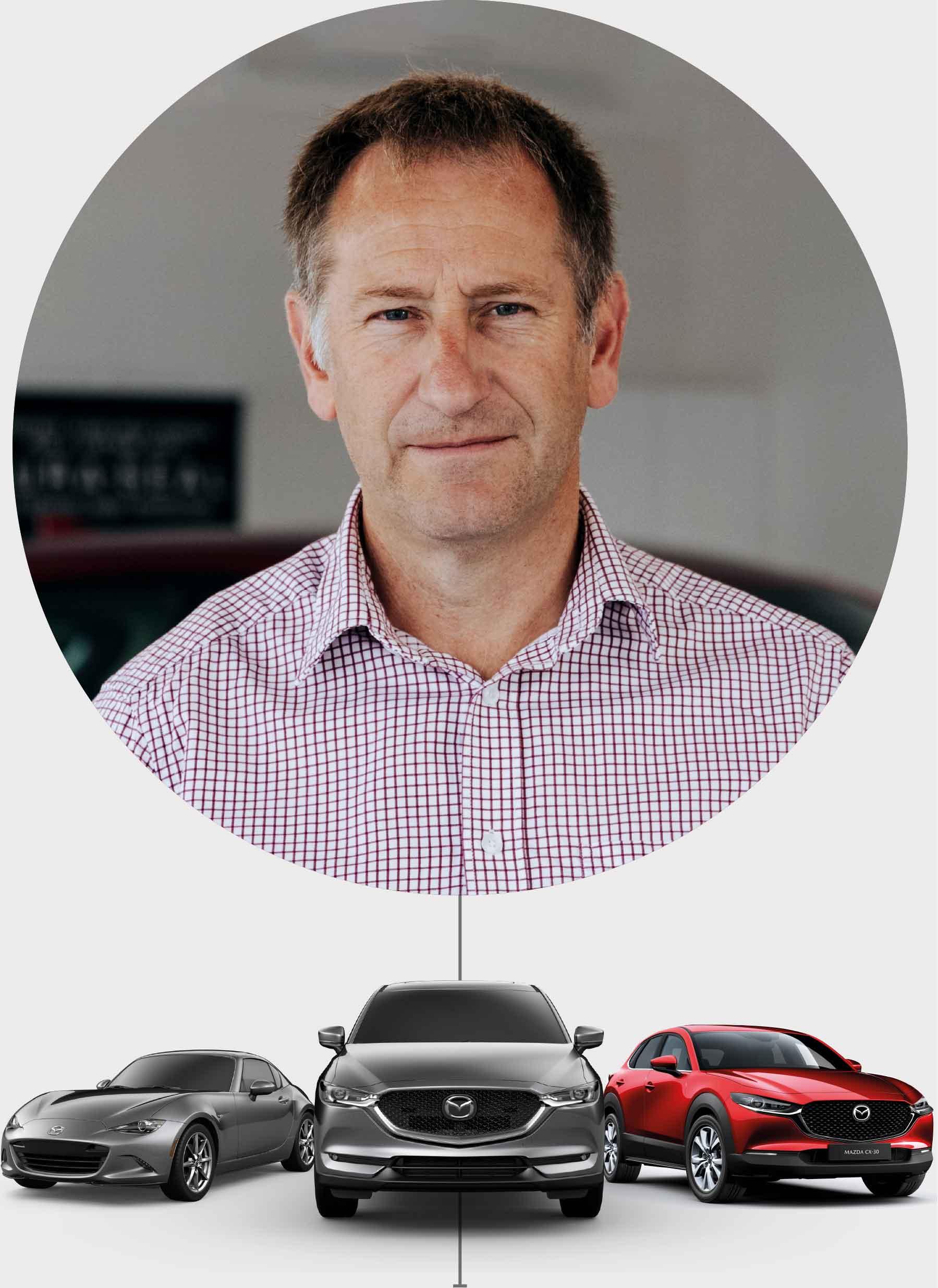
“MAZDA HAS ALWAYS BEEN A LEADER, NOT A FOLLOWER.”
Andrew McKendry, owner of McKendry Mazda, one of the first Mazda dealerships in New Zealand.
“My father, Leo, started the business in 1967 and then took up the Mazda dealership in 1972. We’re a farming community here in Blenheim, so it’s very important to have access to a pickup truck. At the time Mazda had the B1500, and there was nothing else like that on the market. Mazda has always been a leader and not a follower.
“MAZDA IS A SMALLER COMPANY THAN SOME OF THE OTHERS, SO IT HAS MORE SOUL.”
Phil Blake, British owner of more than 35 rotary-powered cars, including the Mazda Cosmo.
“My interest in the Cosmo is the rotary engine. I like the smoothness, the sound, the power delivery… I got into rotary engine cars when I was 15 and the Cosmo is among the rarests. It was launched in 1967 and was the one I dreamed of having. I like innovation—things that stand out from the norm, where manufacturers try to be a bit brave.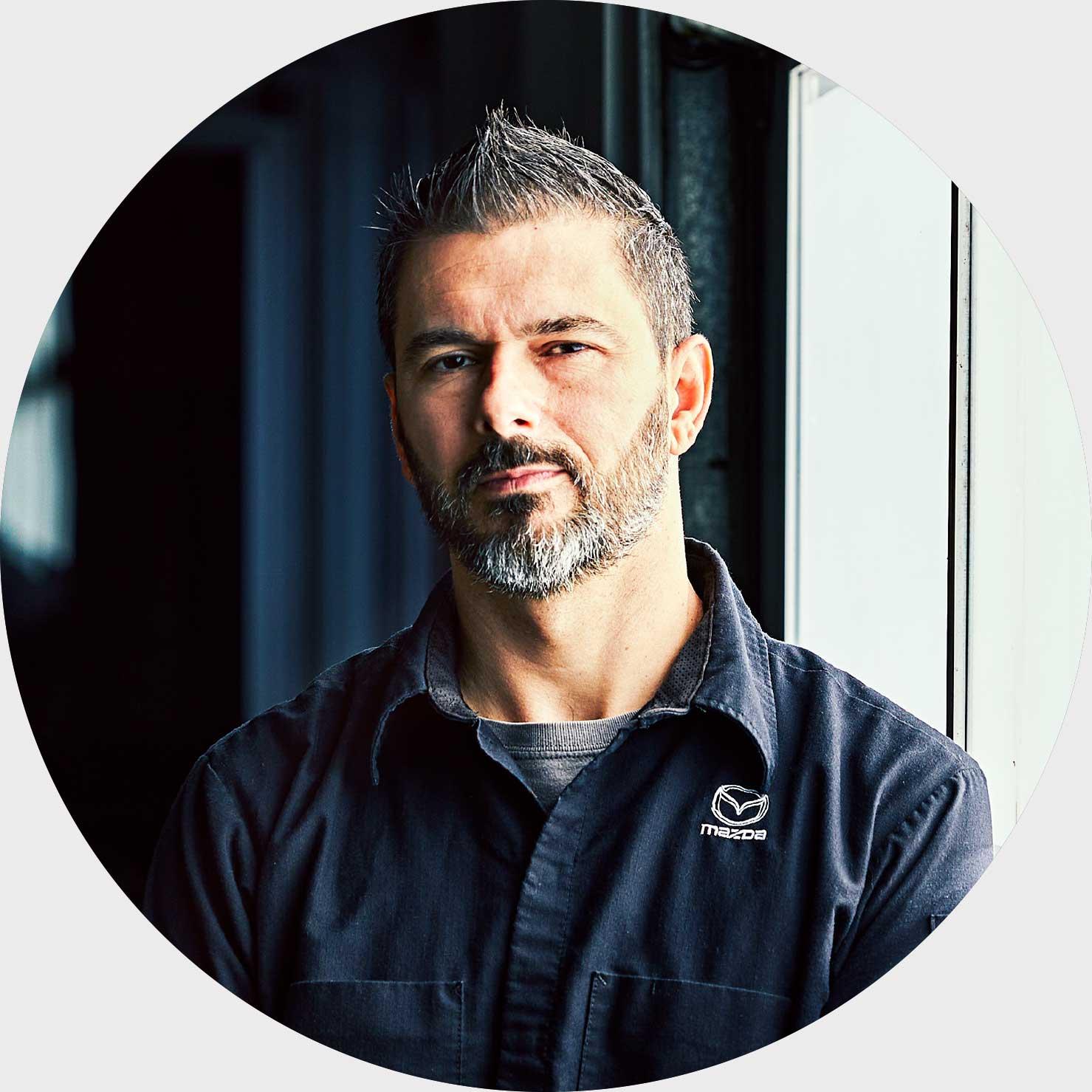
“MY PASSION FOR MAZDA’S VEHICLES INSPIRED ME TO START A CAREER AS A MECHANIC.”
Yanick Morin, Canadian Mazda Technician for 25 years.
“I’ve been working at Sittelle Mazda in Saint-Georges, Quebec, since March 1995. When I started I was washing cars, but my passion for the vehicles inspired me to start a career as a mechanic. My first Mazda was a 1990 MX-5, which I bought when I was 17 or 18 years old. I immediately fell in love with driving that car.
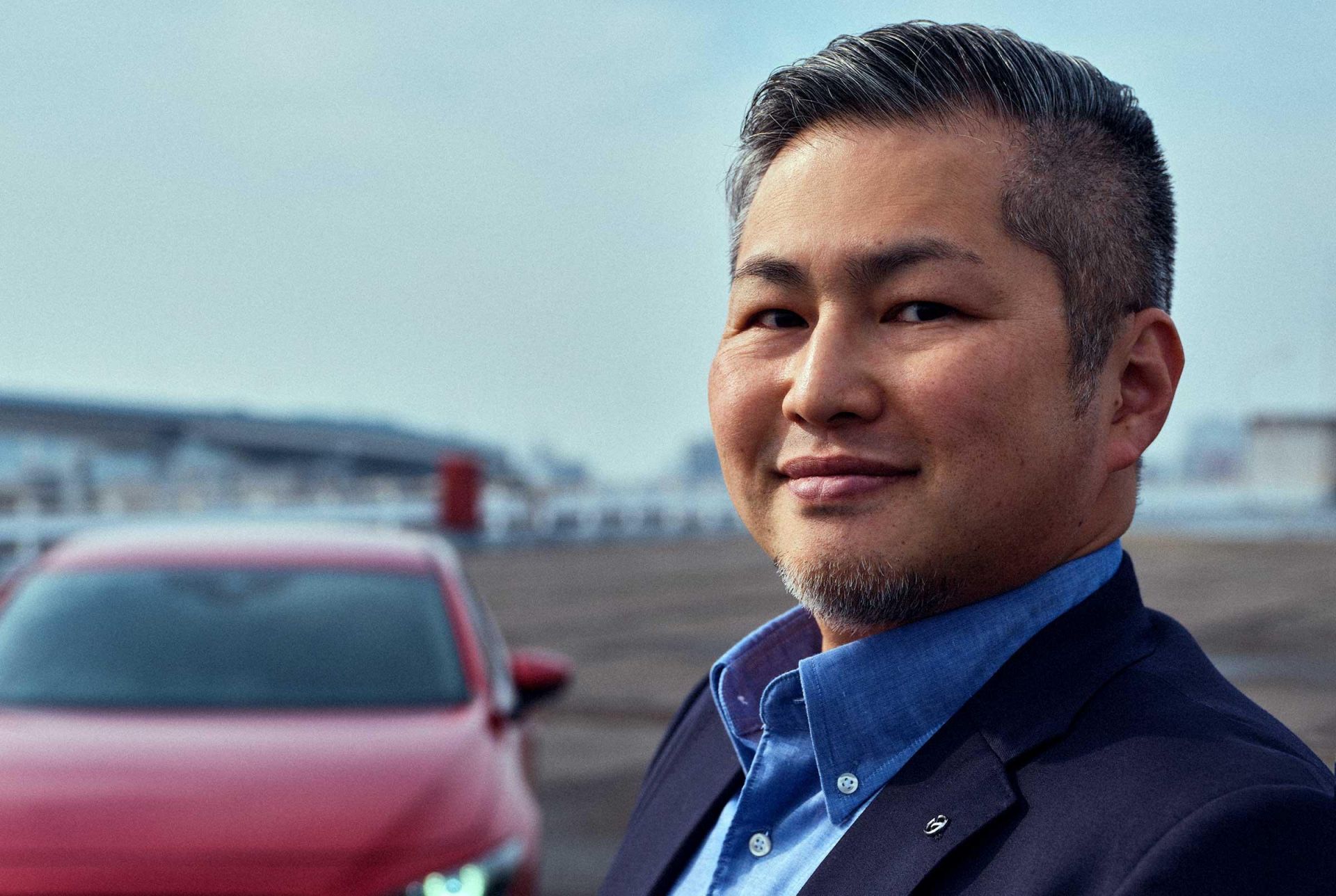
“WORKING FOR MAZDA, I FEEL LIKE I’M LIVING MY DREAM.”
Kouta Beppu, General Manager in Brand Strategy Department, Hiroshima, Japan.
“When I was at university, I thought I’d land a job at a media or finance-related firm after graduation. I was a poor student, after all, and these were some of the highest-paying companies at the time. But then I met someone from Mazda. They told me the company had a unique corporate culture where its employees could realize whatever it was they wanted to do in their professional careers, which sounded very appealing.
Around that time, I caught a glimpse of a blue Mazda roadster, top open, speeding past me and immediately fell in love with the car. I saw this as a sign, so I decided to join Mazda. For my first job I was assigned to a department that dealt with sales, but I was more interested in engineering or marketing.
I don’t have an engineering background, so I studied it in my spare time and waited for the opportunity to present itself. The moment finally came when I was appointed program manager of the new Mazda3. It was thrilling, to say the least, but daunting as the task ahead was huge. It was definitely a dream come true for me and I still feel like I’m living my dream!”
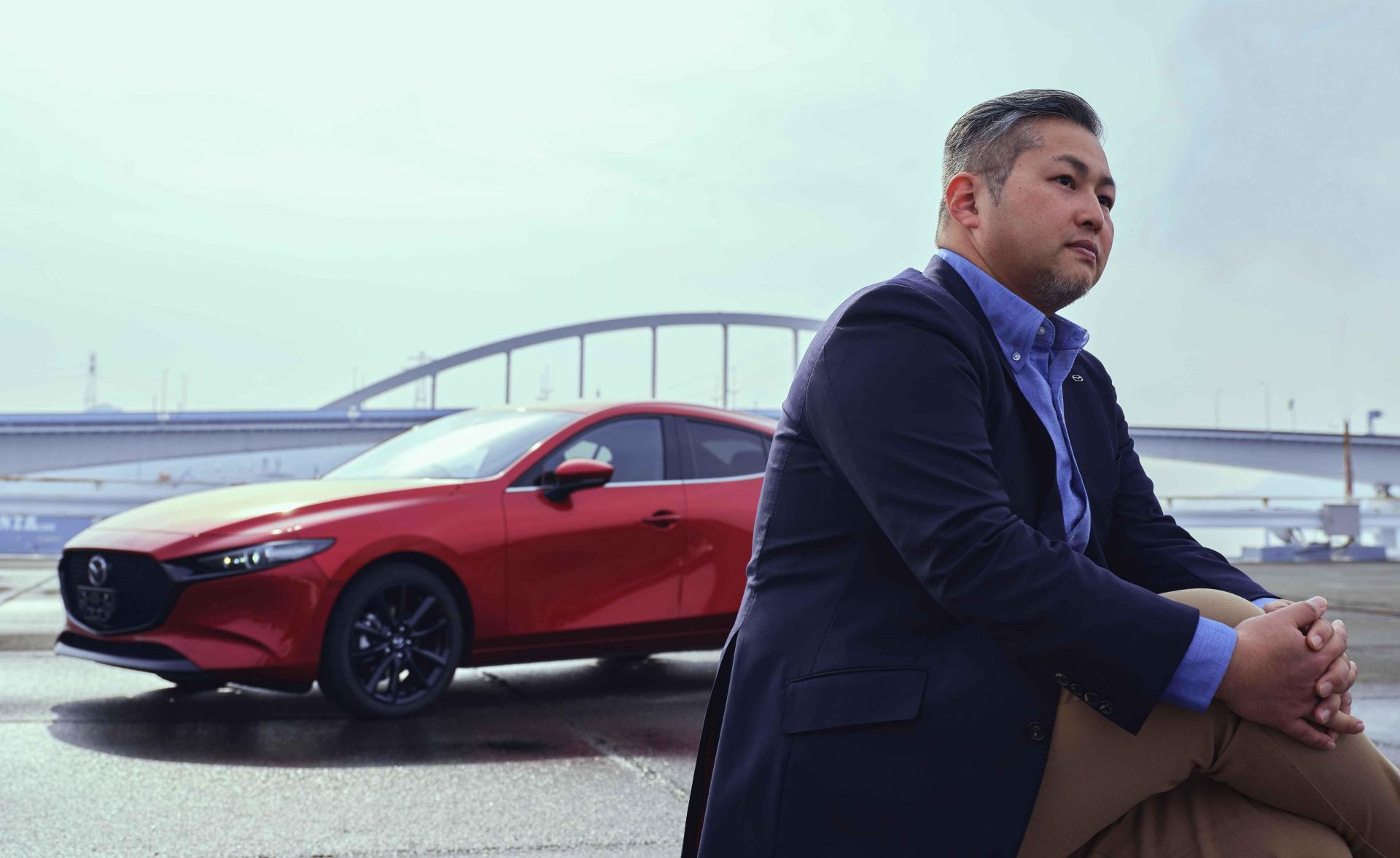
Kouta Beppu was the program manager on the 2020 Mazda3 (above). The car won the highly prestigious 2019 Red Dot: Best of the Best design award.
Photography: Eric Micotto
Read Article Here